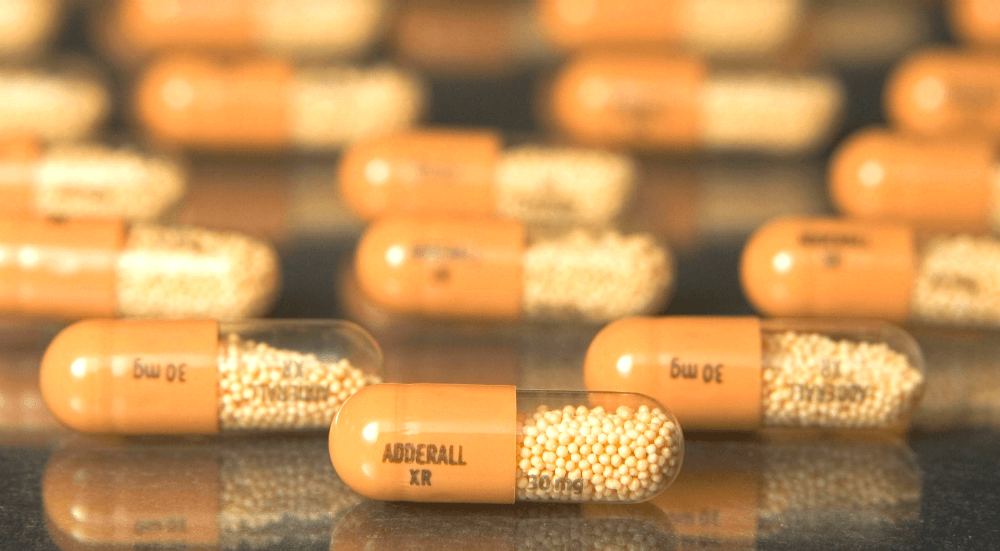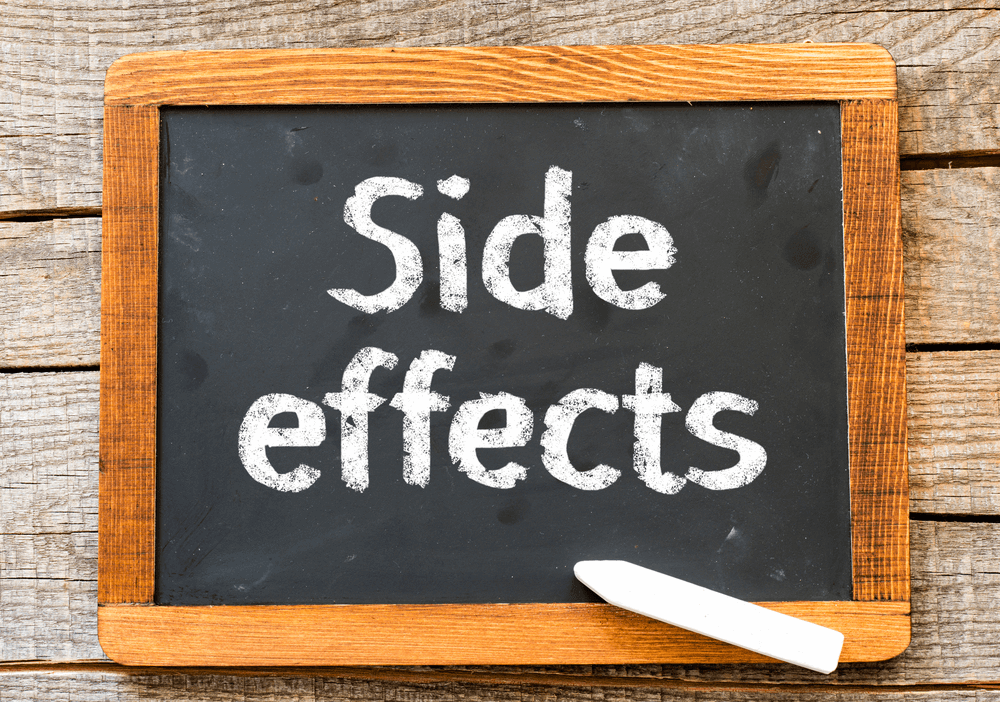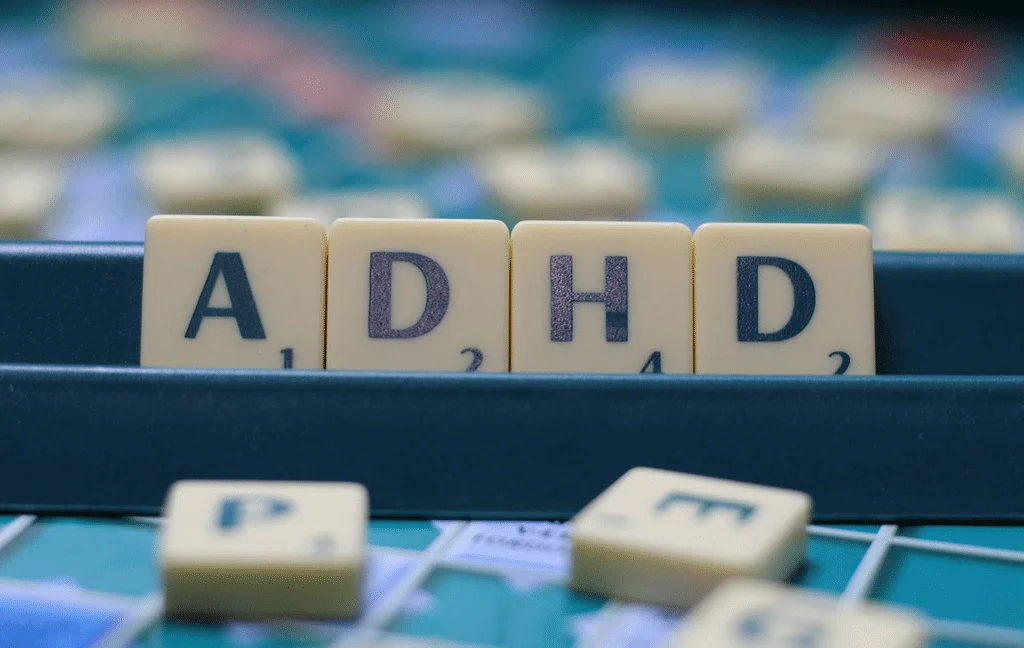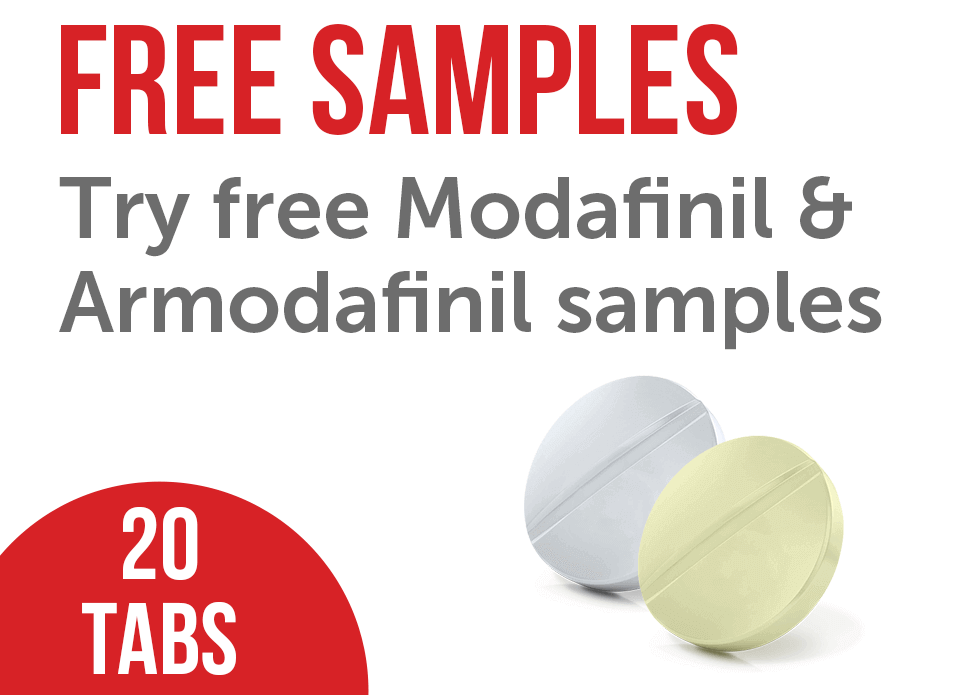Ritalin and Adderall are among the most widely prescribed stimulants for managing attention deficit hyperactivity disorder (ADHD) and narcolepsy. But what exactly makes them different? Is one more effective than the other? Do they have the same side effects? What about their uses for things like studying or weight loss?
With so many questions like what type of drug is Ritalin and Adderall, choosing the right option can feel overwhelming. Are their dosages interchangeable? How do they interact with other meds? Which one is safer or more suitable for long-term use? How popular are these drugs, and why do some patients respond to one drug better than the other when compared? This guide reviews all these questions and more by breaking down everything you need to know about Ritalin vs. Adderall. Let’s dive in.
What Is Ritalin?
Ritalin, the brand name for methylphenidate, was first developed in the 1940s by Leandro Panizzon at Ciba, a Swiss pharmaceutical company [1]. Originally intended for treating low blood pressure, its stimulating effects on the brain led to its use for hyperactivity. Afterwards, it was endorsed by the U.S. Food and Drug Administration (FDA) for use in the U.S. as an ADHD medication.
Over time, its role expanded to include the treatment of narcolepsy, a condition causing excessive daytime sleepiness. The drug’s approval was based on clinical studies showing its effectiveness in improving concentration, focus, impulse control, behavioral regulation, and overall attention in individuals with ADHD.
Today, Ritalin is widely used to manage ADHD in kids and adults, as well as narcolepsy. It helps individuals stay focused and alert, significantly improving daily functioning. The drug’s mechanism involves increasing norepinephrine and dopamine levels in the brain, which enhances cognitive function and alertness.
Ritalin remains a key therapeutic tool in psychiatry, with strict regulations ensuring its use under medical supervision. It’s a Schedule II substance in the USA under the Controlled Substances Act. Schedule II drugs, which comprise methamphetamine and cocaine, have a high potential for abuse.
What Is Adderall?
Adderall is a prescription stimulant medication composed of a combination of amphetamine salts, primarily dextroamphetamine and levoamphetamine. It was first developed as an improvement over earlier amphetamine-based meds, such as Obetrol, which was used for weight loss. Adderall is used to treat ADHD and narcolepsy [2]. It has also been utilized off-label for depression and fatigue in specific medical ailments, like MS fatigue. Despite its therapeutic benefits, Adderall is classified as a Schedule II controlled substance in the U.S.
Its balanced formulation of amphetamine isomers provides both immediate and extended effects, making it effective in enhancing focus, attention, and impulse control in individuals with ADHD. It’s sometimes used off-label as a performance enhancer, cognitive booster, appetite suppressant, or recreational drug for its euphoric effects.
Ritalin and Adderall Comparison Chart
Although both meds are central nervous system stimulants typically used to treat narcolepsy and ADHD, they have unique properties. Below, the comparison chart provides an overview of Ritalin vs Adderall, highlighting differences and similarities [3].
| Drug Attributes | Ritalin | Adderall |
| What’s the generic name? | methylphenidate | amphetamine/dextroamphetamine |
| Is there a generic alternative available? | yes | yes |
| What forms does the med come in? |
|
|
| What’s its approved use? | Ritalin/Ritalin LA: ADHD; Ritalin only: narcolepsy | Adderall/Adderall XR: ADHD; Adderall only: narcolepsy |
| How long does the treatment usually last? | long-term | long-term |
| What’s the proper way to store it? | at room temperature, ideally between 20°C and 25°C (68°F to 77°F). | at 20°C to 25°C (68°F to 77°F), typical room temperature. |
| Is it classified as a controlled substance? | yes | yes |
| Is there a potential for withdrawal symptoms from this med? | yes | yes |
| Is there a risk of misuse with this drug? | yes | yes |
| How swiftly does it peak? | Immediate-release: peak at 2 hours
Ritalin LA: peak at 5 hours |
Immediate-release: peaks in 3 hours
Adderall XR: peaks in 7 hours |
| Length of effectiveness | Shorter duration, faster peak | Longer-lasting effects |
As revealed in the table, these drugs seem to have equivalent characteristics but differ in some aspects as shown in the table. Besides, while both meds are stimulants with a high potential for abuse, Adderall is typically considered more addictive. This is due to Adderall’s active ingredient, which can produce a more intense “high” and thus augment the risk of addiction and dependence.
Further, Adderall’s structure consists of a phenethylamine backbone with amphetamine salts, enhancing dopamine and norepinephrine activity. Ritalin’s structure features a piperidine ring and a methyl ester group, also targeting dopamine and norepinephrine reuptake.
What’s more? The cost of Adderall (5 mg oral tab) is around $1,262 for a 100-tab supply when paying out-of-pocket, depending on the pharmacy, and this price is based on using the Drugs.com discount card [4]. For Ritalin (10 mg oral tab), the price is significantly lower at approximately $137 for a 100-tablet supply, also based on the discount card as per Drugs.com at the time of writing this guide [5]. These costs are for cash-paying shoppers and may vary by location and pharmacy. It’s important to note that these prices are not valid with insurance plans. To get the best price, checking with different pharmacies and using discount cards can be helpful.
Ritalin vs Adderall: Difference Between…
While both meds are used to treat similar conditions, they have distinct properties that affect how they are dosed, their side effect profiles, and how they interact with other meds. Below, we compare the difference between their dosages, side effects, and interactions.
Dosages
Ritalin and Adderall come in a variety of dosages. The dosage differs depending on the formulation—whether it’s immediate-release or extended-release—and the age or specific needs of the patient. You can check Adderall and Ritalin dosage conversion to find equivalent doses between the two meds. Here’s a dosage chart for Ritalin and Adderall [6][7]:
| Drug Feature | Ritalin | Adderall |
| What strength does it come in? |
|
|
| What is the initial dose for ADHD? |
|
|
| What is the highest recommended daily dose for ADHD? |
|
|
| Time to take effect |
|
|
| Peak Effects |
|
|
| Duration of Action |
|
|
Now you may ask: What to expect when switching from Adderall to Ritalin? Certainly, you may need more frequent doses due to Ritalin’s shorter duration, and it could cause fewer stimulating negative effects. However, it may be less effective for some, so dosage adjustments are often necessary. Close monitoring with your physician is recommended.
Besides, if you’ve been taking any of the meds for longer than a few weeks, don’t cease taking them without consulting your medical specialist. You’ll need to taper off the med gradually to bypass withdrawal signs, such as nausea, anxiety, sweating, and trouble sleeping.
Side Effects
Since both drugs have a similar mechanism of action by affecting certain neurotransmitters in the brain, they often cause comparable side effects, though individual experiences can vary depending on factors such as dosage, formulation, and personal sensitivity. Both meds can lead to a variety of common and more serious side effects.
Both Ritalin, Ritalin LA, Adderall, and Adderall XR can cause standard negative effects such as:
- stomachache;
- insomnia;
- loss of appetite;
- heightened heart rate;
- dizziness;
- dry mouth;
- headaches;
- nervousness;
- anxiety.
In some cases, more serious side effects can occur, including:
- issues with heart rhythm;
- Raynaud’s phenomenon;
- psychosis;
- slowed growth in children.
If you’re considering these meds or experiencing any troubling negative effects, it’s vital to consult with your medical specialist to make sure the med is appropriate for your needs.
Interactions
Both drugs can interact with various other meds, so it’s crucial to inform your physician about any prescription drugs, supplements, over-the-counter (OTC) meds, and herbs you’re taking. This aids your physician in monitoring and avoiding potential drug interactions.
Ritalin may interact with the following meds:
- antidepressants;
- risperidone;
- meds for high blood pressure;
- certain anesthetics.
Besides, Adderall and Adderall XR may interact with the following:
- alkalinizing agents;
- Proton pump inhibitors;
- acidifying agents;
- antihistamines;
- antidepressants;
- meds for high blood pressure.
These drugs also interact with various drugs, including CYP2D6 inhibitors, including bupropion (Forfivo XL, Aplenzin, Wellbutrin), paroxetine (Paxil, Pexeva), fluoxetine (Prozac), terbinafine, and quinidine.
Further, monoamine oxidase inhibitors (MAOIs) are contraindicated with both Adderall, Adderall XR, and Ritalin due to the danger of high blood pressure, and their mix should be avoided.
Comparing Adderall and Ritalin for…
While Adderall and Ritalin are most commonly associated with ADHD treatment, they are also utilized in managing other health conditions and enhancing focus for studying. Here’s a closer look at how these meds compare to each other for the following purposes:
ADHD Treatment
Both drugs are highly effective in treating ADHD, but they may work differently for individuals depending on their specific symptoms and needs. Adderall is often preferred for individuals who experience both inattention and hyperactivity, as it provides a more balanced effect on both cognitive focus and behavior. It tends to have a longer duration of effect, particularly with the Adderall XR form, making it suitable for individuals who need symptom control throughout the entire day.
On the other hand, Ritalin is typically quicker-acting and may be more effective for those who primarily struggle with inattention rather than hyperactivity. The immediate-release form of Ritalin offers quicker relief but requires more frequent dosing.
The response to these meds can vary; some individuals may find one more effective than the other. For instance, in a study, Adderall was about twice as strong and lasted longer than Ritalin for treating ADHD in children, though behavioral therapy alone worked well for a quarter of participants [8].
Ultimately, while both meds are proven to be effective in managing ADHD symptoms, Adderall might be favored for all-day control, while Ritalin is often chosen for shorter durations of action.
Narcolepsy
Both Adderall and Ritalin are effective stimulant meds used to manage narcolepsy. Research indicates that Adderall may offer more consistent control of daytime sleepiness due to its longer duration of action, especially with extended-release formulations. This sustained effect can be beneficial for people who demand prolonged wakefulness throughout the day.
On the other hand, Ritalin has a shorter duration of effect. While effective in lessening excessive daytime sleepiness, Ritalin may require multiple doses throughout the day to maintain wakefulness, which could be less convenient for some patients. However, it remains a viable option for managing narcolepsy symptoms, particularly for those with less severe cases or those who need quicker symptom relief.
For adults with narcolepsy, the American Academy of Sleep Medicine (AASM) recommends these meds with a conditional recommendation (e.g., suggesting) while strongly advising to use modafinil for narcolepsy treatment [9].
Weight Loss
While Adderall and Ritalin aren’t approved for weight loss, both meds have been observed to suppress appetite as a side effect, potentially leading to weight loss in some individuals. However, the extent and consistency of this effect can vary between the two drugs.
Adderall, containing a combination of amphetamines, has been associated with more substantial hunger suppression. A narrative review of 39 studies indicated that methylphenidate, the active ingredient in Ritalin, can lead to modest weight loss of 1–2% and substantial appetite suppression, with stronger consequences observed in women. However, the review also noted that investigations could stay underpowered to glimpse consistent results in men [10].
In contrast, Ritalin, which contains methylphenidate, has shown appetite-suppressing effects in both adolescents and adults. A study involving obese adolescents found that a single dose of methylphenidate reduced energy intake from fat and carbohydrates, suggesting its potential to decrease food intake [11].
Despite these findings, both meds are primarily prescribed for ADHD and narcolepsy and should not be used for weight loss without medical supervision. The appetite-suppressing effects can vary among individuals, and the long-term safety and effectiveness of using these meds for weight management require further research.
Increasing Focus for Studying
Research comparing the cognitive enhancement effects of Adderall and Ritalin in healthy individuals has yielded mixed results. A meta-analysis reviewed multiple studies on the cognitive effects of stimulant meds in healthy adults. This meta-analysis found that Ritalin augments recall, sustained attention, and inhibitory control.
All effects were modest and didn’t match popular perceptions of these drugs as strong cognitive enhancers. Despite these small improvements, the overall effects were modest and may not translate to significant enhancements in real-world tasks. The study also noted that the perceived cognitive enhancement may not align with actual performance improvements [12].
Besides, a pilot study found that Adderall had minimal effects on cognitive performance, including working memory and executive function, in healthy college students. However, it did improve attention and reduced response variability on certain tasks, suggesting modest enhancements in specific cognitive domains [13]. Similarly, another study reported that while Adderall increased positive mood and heart rate, it didn’t enhance reading comprehension or fluency, and it impaired working memory. Participants also perceived no improvement in their cognitive performance, indicating a disconnect between subjective feelings and actual cognitive enhancement [14].
While some studies are mixed, one study found that Adderall’s effects on creativity in healthy adults depend on the task type and baseline ability: it enhanced convergent thinking (focused problem-solving) in lower-performing individuals but had mixed or neutral effects on higher performers while showing no clear impact on divergent thinking (idea generation) [15].
Further, a 2015 review discovered that therapeutic doses of methylphenidate and amphetamine result in modest improvements in cognition, including episodic memory, working memory, and inhibitory control, in normal healthy adults; the cognition-fostering effects of these meds occur via the indirect activation of dopamine receptor D1 and adrenoceptor α2 in the prefrontal cortex [1].
Ritalin vs Adderall: Which One Is Better for You?
Conclusively, choosing between Ritalin and Adderall depends largely on your needs and drug response, as both meds are effective treatments for ADHD but work differently. Ritalin tends to act more quickly and may have a shorter duration of effect, making it suitable for individuals who need more precise control over medication timing. Adderall tends to last longer and may offer more sustained relief for those who need extended focus throughout the day.
Ultimately, the decision between Ritalin and Adderall should be made in consultation with a medical specialist, who can consider your specific symptoms, medical history, and potential negative effects. Both drugs carry potential risks, so careful monitoring and personalized adjustments are vital to finding the right treatment.
References
- Methylphenidate. Retrieved: May 5, 2025. Wikipedia.org.
- Adderall. Retrieved: May 5, 2025. Wikipedia.org.
- What’s the Difference Between Ritalin and Adderall? By Susan York Morris. Retrieved: May 5, 2025. Medically reviewed by Ami Patel. Healthline.com.
- Adderall Prices, Coupons, Copay Cards & Patient Assistance. Retrieved: May 5, 2025. Drugs.com.
- Ritalin Prices, Coupons, Copay Cards & Patient Assistance. Retrieved: May 5, 2025. Drugs.com.
- Ritalin. Medically reviewed by Sanjai Sinha. Retrieved: May 5, 2025. Drugs.com.
- Adderall. Medically reviewed by Kaci Durbin. Retrieved: May 5, 2025. Drugs.com.
- A Comparison of Ritalin and Adderall: Efficacy and Time-course in Children With Attention-deficit/Hyperactivity Disorder. By William E. Pelham, Helen R. Aronoff, Jill K. Midlam, et al. Published: April 1, 1999. Publications.aap.org.
- Treatment of central disorders of hypersomnolence: an American Academy of Sleep Medicine clinical practice guideline. By Kiran Maski, Lynn Marie Trotti, Suresh Kotagal, et al. Published: September 1, 2021. Jcsm.aasm.org.
- Methylphenidate can help reduce weight, appetite, and food intake-a narrative review of adults’ anthropometric changes and feeding behaviors. By Fernand Vedrenne-Gutiérrez, Sion Yu, Anna Olivé-Madrigal, and Vanessa Fuchs-Tarlovsky. Published: November 2024. Pubmed.ncbi.nlm.nih.gov.
- Methylphenidate decreases fat and carbohydrate intake in obese teenagers. By N. Danilovich, L. D. Mastrandrea, L. Cataldi, and T. Quattrin. Published: December 3, 2013. Pubmed.ncbi.nlm.nih.gov.
- How effective are pharmaceuticals for cognitive enhancement in healthy adults? A series of meta-analyses of cognitive performance during acute administration of modafinil, methylphenidate and D-amphetamine. By Carl A Roberts, Andrew Jones, Harry Sumnall, Suzanne H Gage, and Catharine Montgomery. Published: September 2020. Pubmed.ncbi.nlm.nih.gov.
- Neurocognitive, Autonomic, and Mood Effects of Adderall: A Pilot Study of Healthy College Students. By Lisa L. Weyandt, Tara L. White, et al. Published: June 2018. Pmc.ncbi.nlm.nih.gov.
- Pilot study suggests ADHD drugs do not improve cognition in healthy college students. Published: July 20, 2018. Brown.edu.
- When we enhance cognition with Adderall, do we sacrifice creativity? A preliminary study. By Martha J. Farah, Caroline Haimm, Geena Sankoorikal, M Elizabeth Smith, and Anjan Chatterjee. Published: January 2009. Pubmed.ncbi.nlm.nih.gov.










